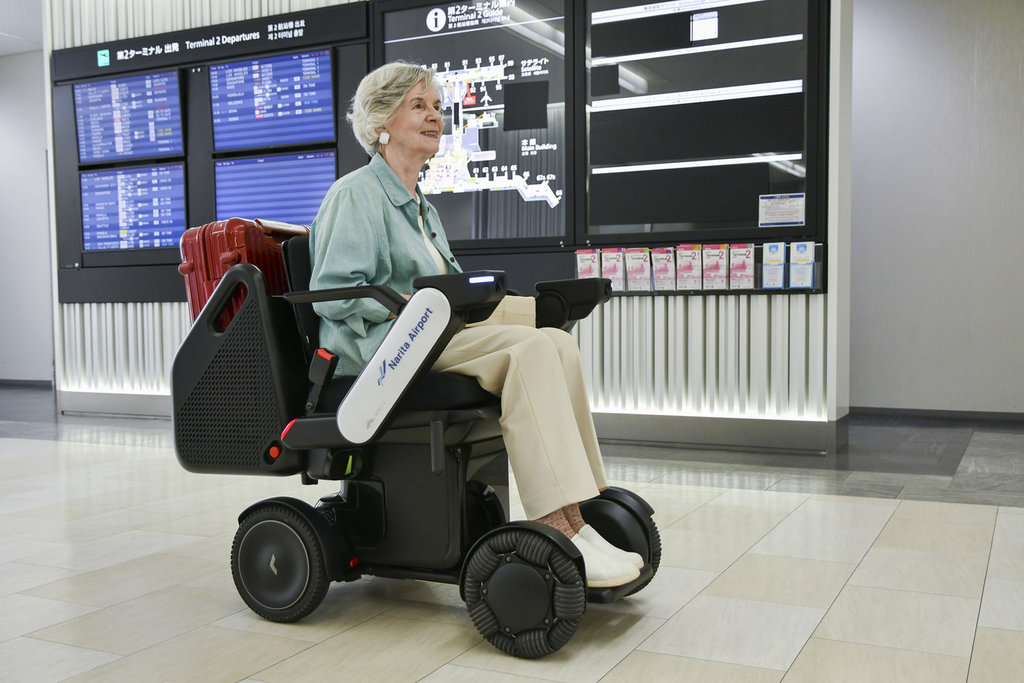Feature
Senior travellers are back – and airports need to be ready
Many airports lack the design and infrastructure needed to cater to older passengers. Richard Barone and Lisa Schafer at Landrum & Brown, a Sidara company, set the way forward.

Almost everywhere in the world, the proportion of ageing individuals is on the rise. By 2050, an estimated two billion people will be aged over 60. While in the past these individuals would have slowed down over time, today this group has the financial means and is keener than ever to travel. For the first time since the Covid-19 pandemic, the over 60 cohort is anticipated to become one of the largest groups of global travellers . However, airports need to improve accessibility for senior travellers to capitalise on this market.

Lisa Schafer, managing consultant at Landrum & Brown
Advancing age often brings health concerns, particularly regarding mobility. Many airports are ill-equipped to cater to the needs of the swiftly growing senior travellers customer segment. Too often the sheer size, physical limitations, and lengthy processes required at airports create unnecessary challenges and frustration, both for ageing passengers and others with impairments.
Despite an improvement in services over the past five years, the aviation industry has a long way to go if it is to create efficient and enjoyable travel experiences for all passengers – whether aged 7 or 77. So what exactly needs to happen?

Richard Barone, associate vice president at Landrum & Brown
Currently, many airports collaborate with companies such as Landrum & Brown to strategise, design, and execute enhanced accessibility programmes which cater to senior travellers. These initiatives include improving and widening walkways with added handrails, creating priority lanes in queue areas, shortening walking distances, offering both in-person and technology-driven assistive services, and expanding wayfinding with more intuitive signage, cameras, sensors and AI programs.
The limitations faced by senior travellers vary from person to person. This is why each airport must be evaluated individually, in terms of passenger needs, to create a plan that will enhance their facilities to improve accessibility, movement, and traveller experience. This requires rethinking the ‘traditional’ airport design.
Policy updates & new technology will help senior travellers
Numerous airports worldwide have improved airport accessibility by embracing the Sunflower Program, an initiative to assist passengers with hidden disabilities. By wearing a sunflower lanyard or lapel, passengers can discreetly display their non-visible disability for airport staff awareness. Airport staff are trained to notice this and help accordingly. Since 2016, the program has expanded to 230 airports in 23 countries.
Many airports are adopting cutting-edge technologies to support passengers. One example is autonomous wheelchairs developed by companies such as WHILL, which are easing stress for both passengers and airport staff across the globe .
The y use built-in cameras and sensors to detect obstacles and are equipped with audio to alert foot traffic in the vicinity , taking passengers to their gate or restroom and then autonomously returning to their charging station for the next user. The positive impact of the technology is twofold: limiting staff requirements and empowering individuals with mobility issues to navigate airports independently.

The WHILL Autonomous Service allows people to navigate airports using a self-driving mobility device that automatically transports them to their selected destinations. Credit: WHILL
The WHILL Autonomous Service allows people to navigate airports using a self-driving mobility device that automatically transports them to their selected destinations. Credit: WHILL `
To support visually impaired passengers, Charlotte Douglas International Airport has partnered with Aira, a visual interpreting service that helps users navigate, read, describe and interpret visual surroundings.
West Virginia International Yeager Airport recently updated its airline ticketing kiosks, which are not only lower to the ground, making them easily accessible for wheelchair users, but they also feature simplified operating software. Looking ahead, they plan to install AI kiosks to further streamline the navigation of the airport's facilities, providing valuable assistance to senior travellers.
Cross-industry collaboration and capital investments improving accessibility
Airports are not the only ones taking the initiative. Airlines, aircraft manufacturers, and cabin designers are also collaborating and investigating methods to improve accessibility throughout the entire travel experience, from getting to the airport to boarding the flight.
For instance, there are efforts to design new seats that cater to individuals with mobility impairments, such as those in wheelchairs. These customised seats allow passengers to remain in their wheelchairs during flights instead of being transferred to a standard aircraft seat.
Additionally, aircraft manufacturers are providing airlines with more restroom design options to help people with mobility issues. Widebody or multi-aisle aircraft have been required to have larger restrooms for those with mobility impairments since 1990.
This is about future-proofing airports for decades to come.
However, in 2023, the US Department of Transportation passed regulations that require narrowbody aircraft to also have accessible restrooms. These changes will include larger facilities on single-aisle aircraft with at least 125 seats.
Although the new rules won't take immediate effect, they come with other near-term accessibility requirements, such as assist handles, accessible call buttons, door locks, and discernible touch controls, which will be a requirement in three years.
While our ageing population was the impetus for redesigning airports to improve mobility, it’s not the only reason. Airports need to think in generational cycles or longer, so today's 30 or 40-somethings are tomorrow's retired or elderly globe-trotters. This is about future-proofing airports for decades to come.